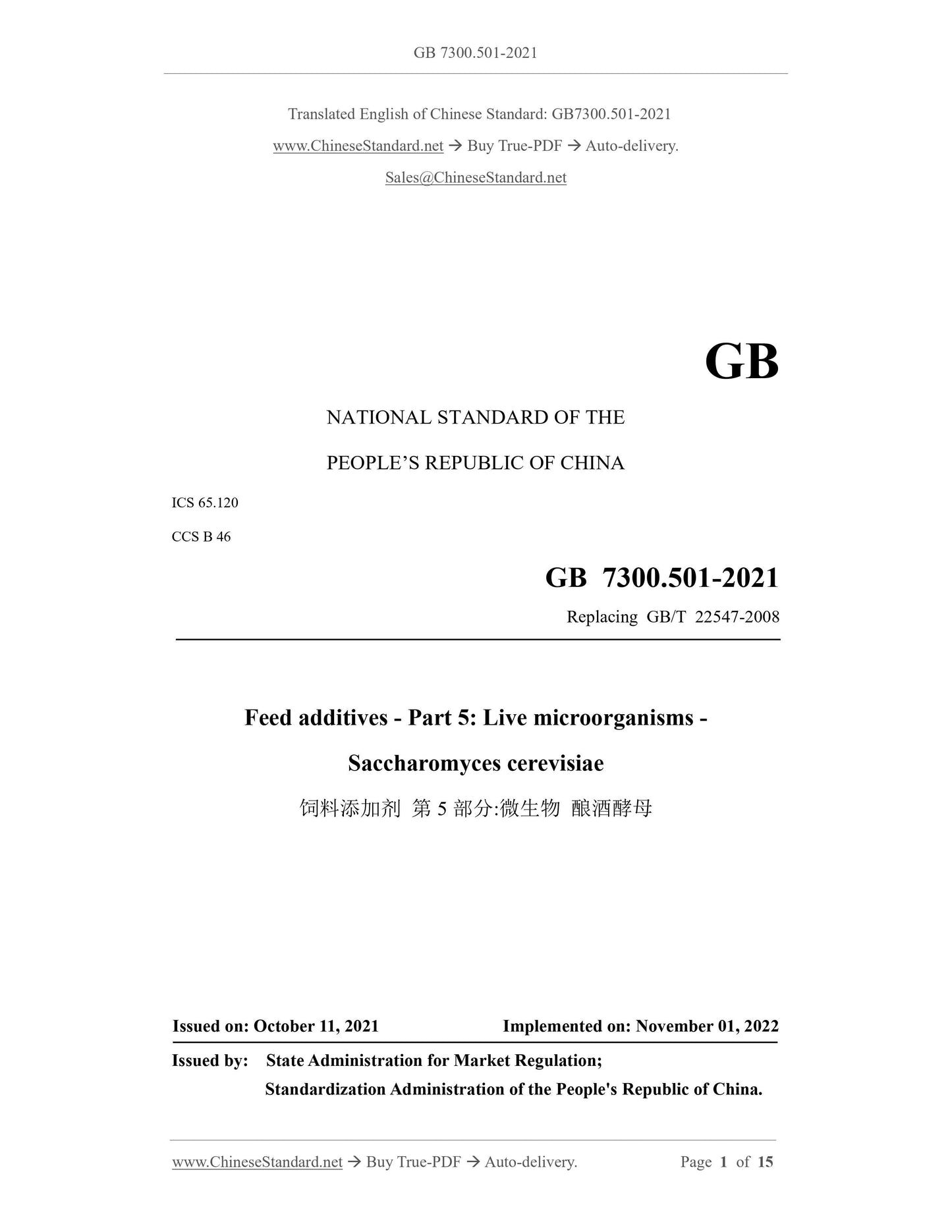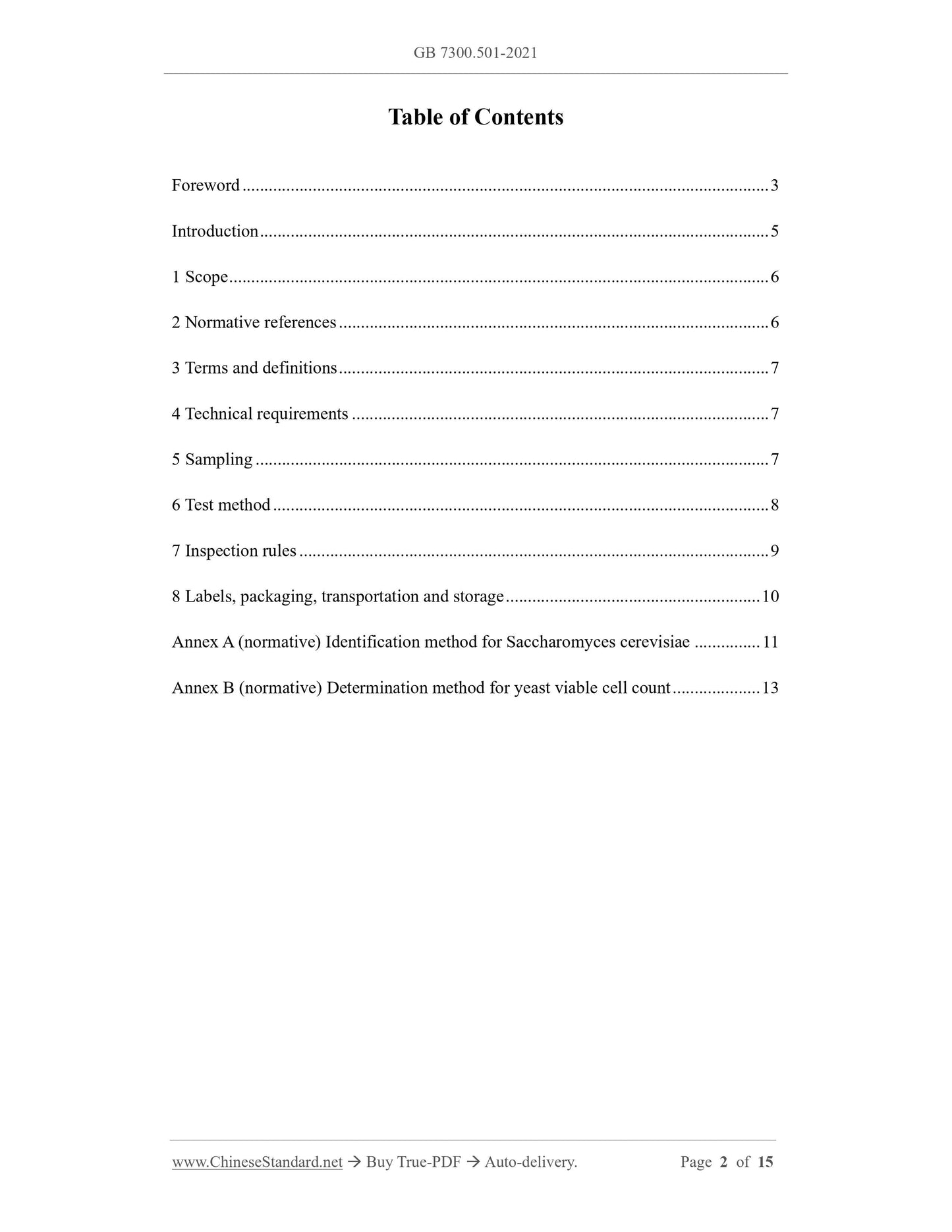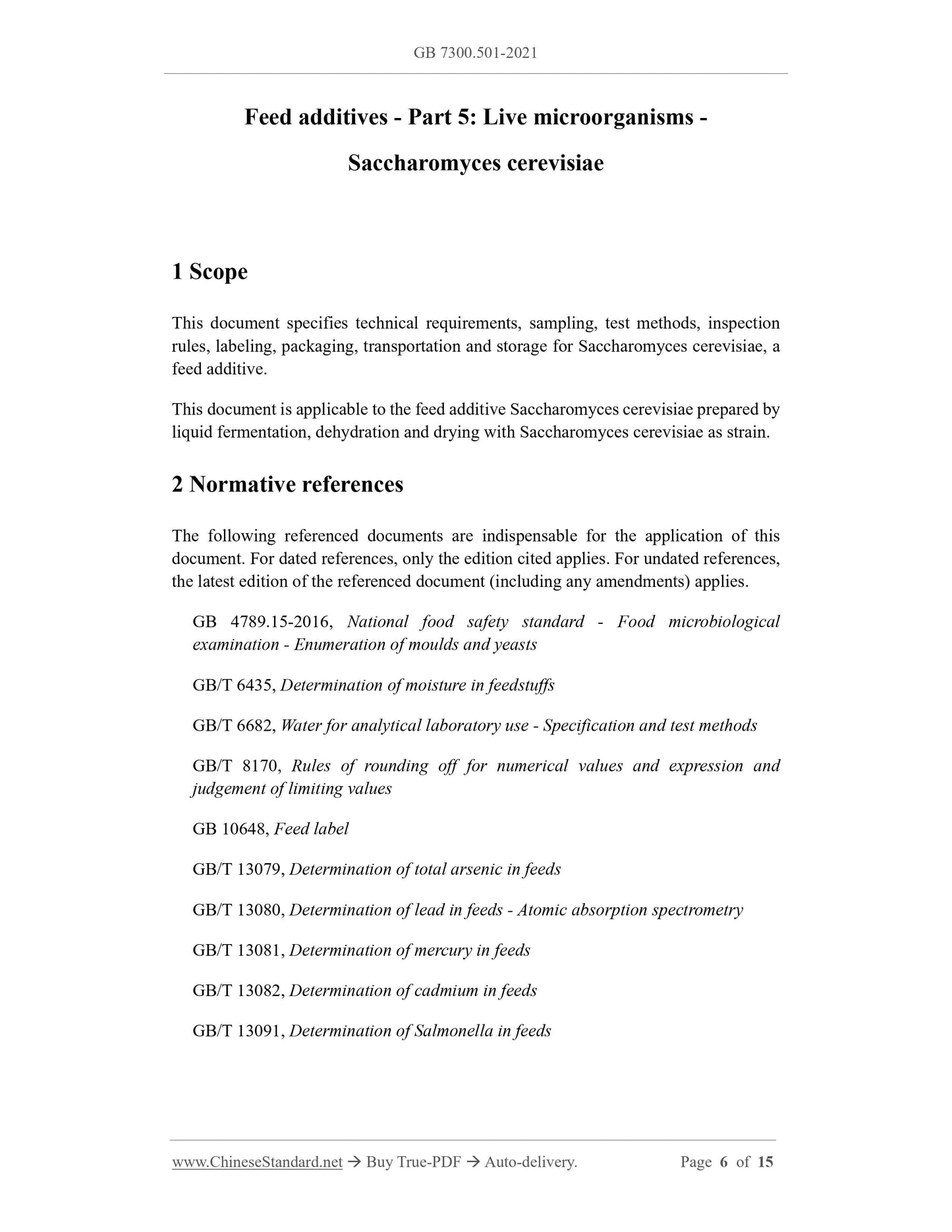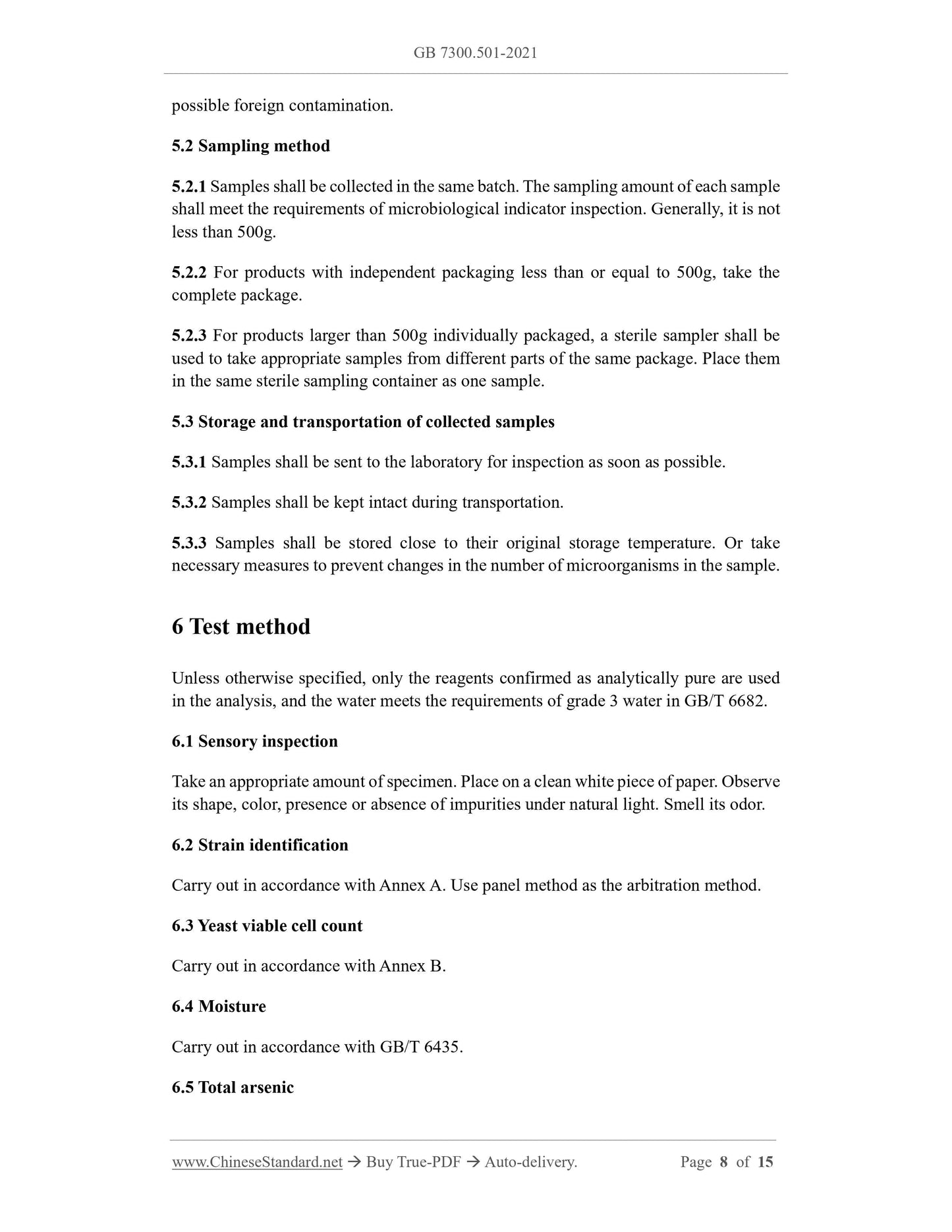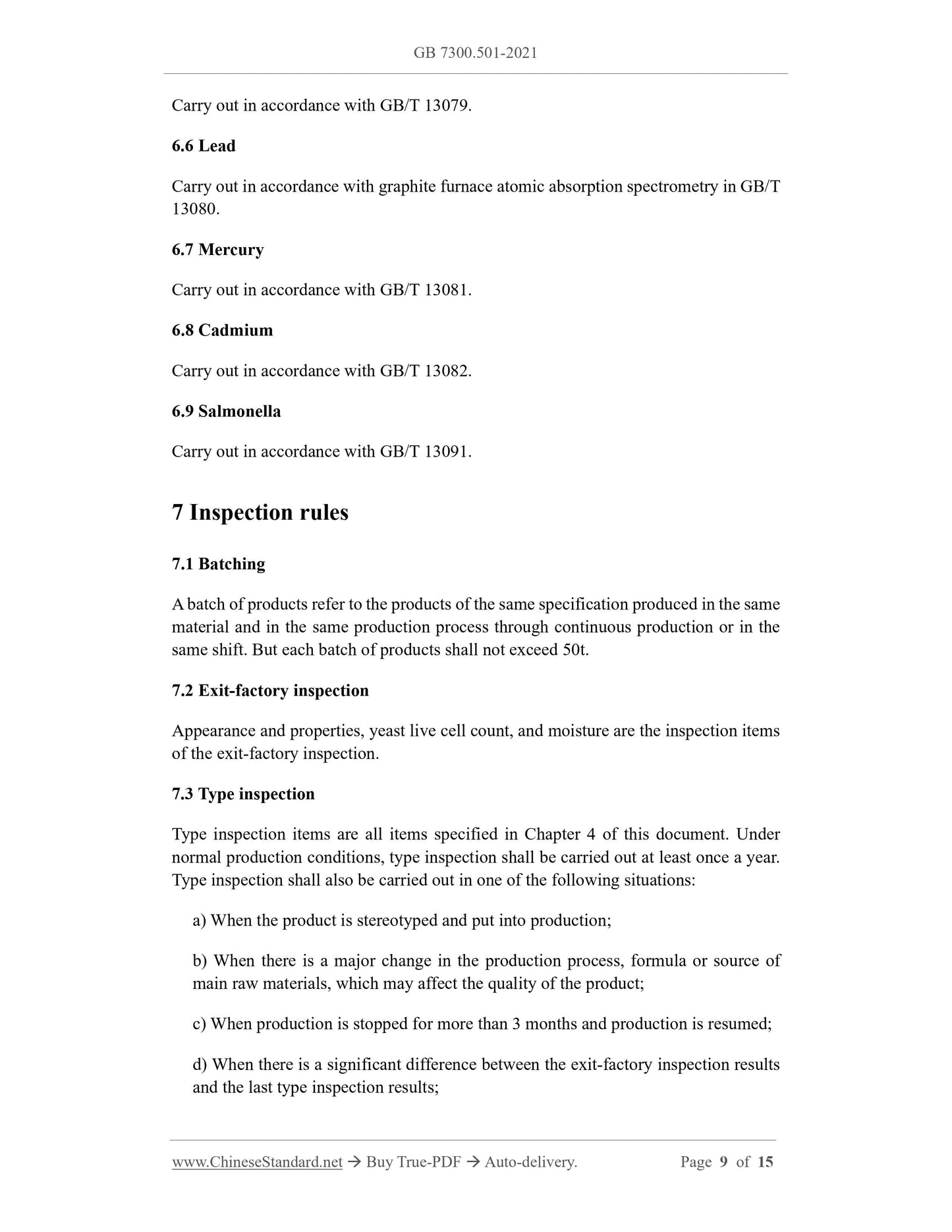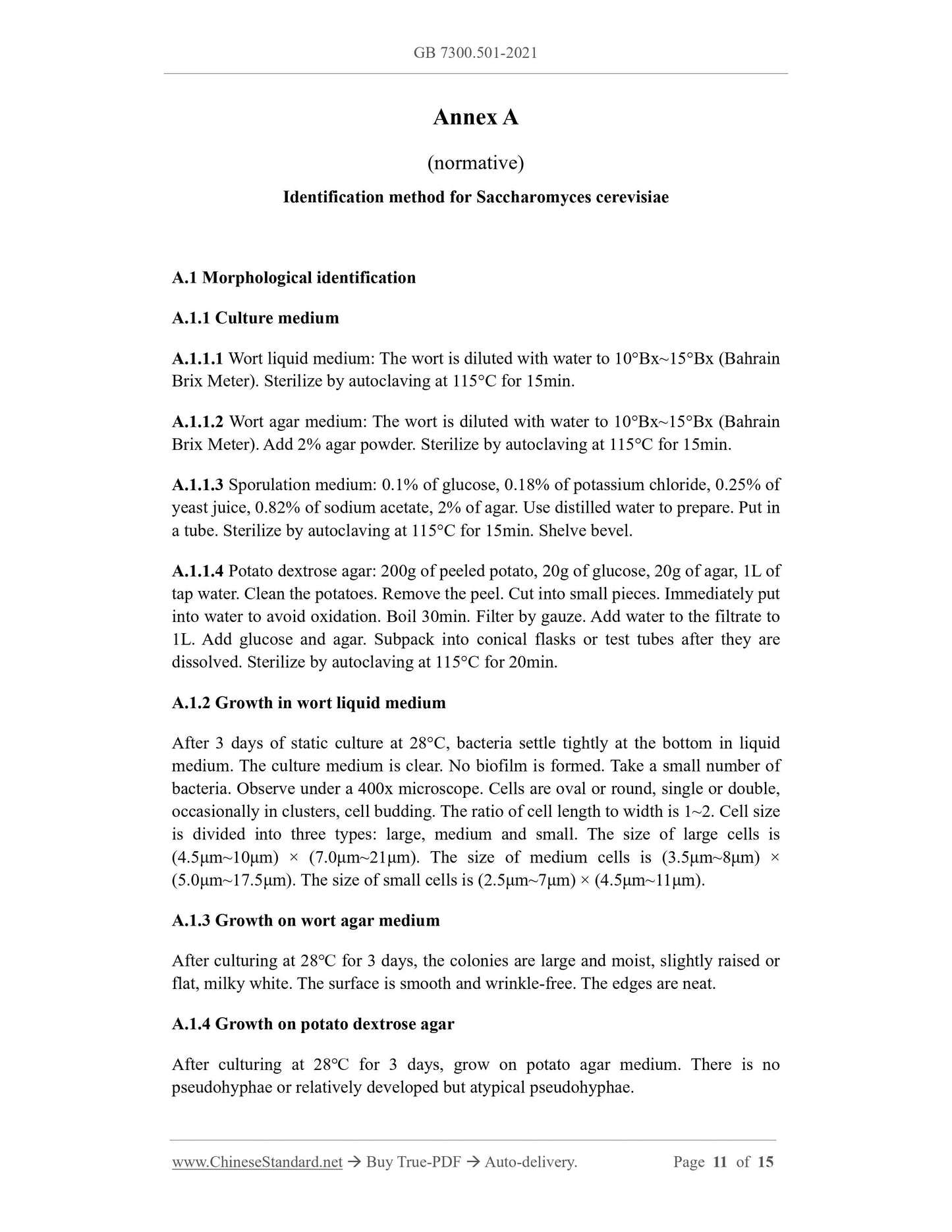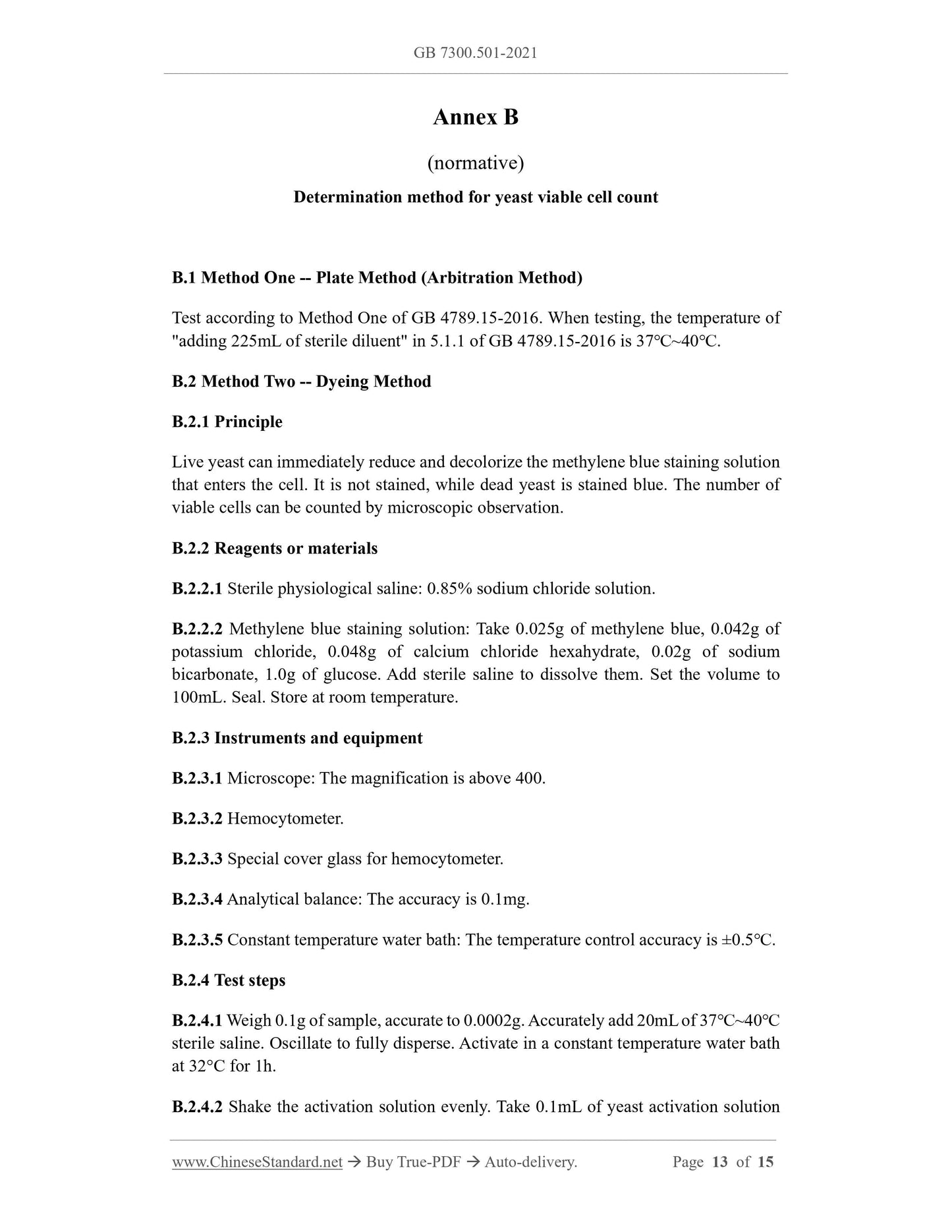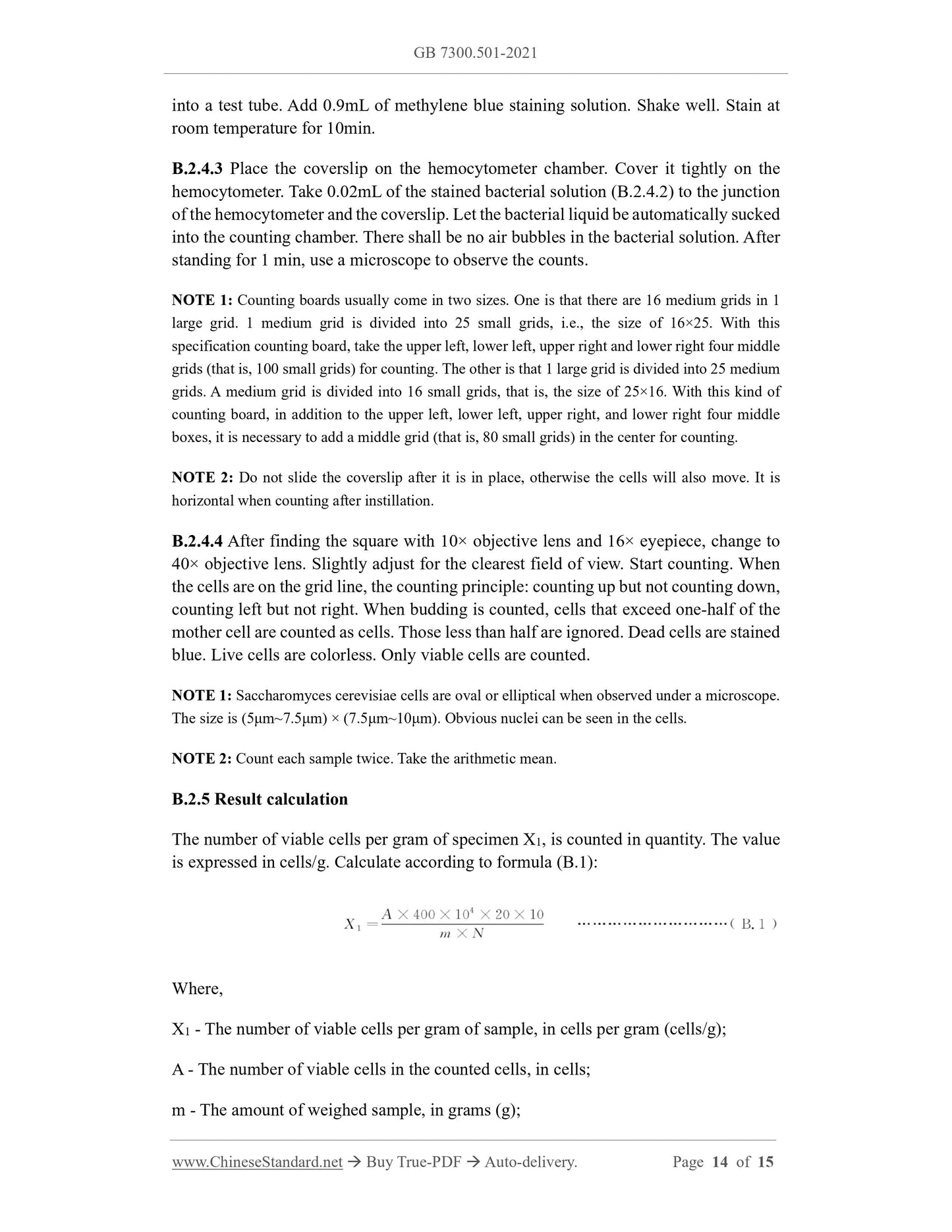1
/
of
8
www.ChineseStandard.us -- Field Test Asia Pte. Ltd.
GB 7300.501-2021 English PDF
GB 7300.501-2021 English PDF
Regular price
$200.00
Regular price
Sale price
$200.00
Unit price
/
per
Shipping calculated at checkout.
Couldn't load pickup availability
GB 7300.501-2021: Feed Additives - Part 5: Live microorganisms - Saccharomyces cerevisiae
Delivery: 9 seconds. Download (and Email) true-PDF + Invoice.Get Quotation: Click GB 7300.501-2021 (Self-service in 1-minute)
Newer / historical versions: GB 7300.501-2021
Preview True-PDF
Scope
This document specifies technical requirements, sampling, test methods, inspectionrules, labeling, packaging, transportation and storage for Saccharomyces cerevisiae, a
feed additive.
This document is applicable to the feed additive Saccharomyces cerevisiae prepared by
liquid fermentation, dehydration and drying with Saccharomyces cerevisiae as strain.
Basic Data
| Standard ID | GB 7300.501-2021 (GB7300.501-2021) |
| Description (Translated English) | Feed Additives - Part 5: Live microorganisms - Saccharomyces cerevisiae |
| Sector / Industry | National Standard |
| Classification of Chinese Standard | B46 |
| Word Count Estimation | 11,145 |
| Issuing agency(ies) | State Administration for Market Regulation, China National Standardization Administration |
Share
